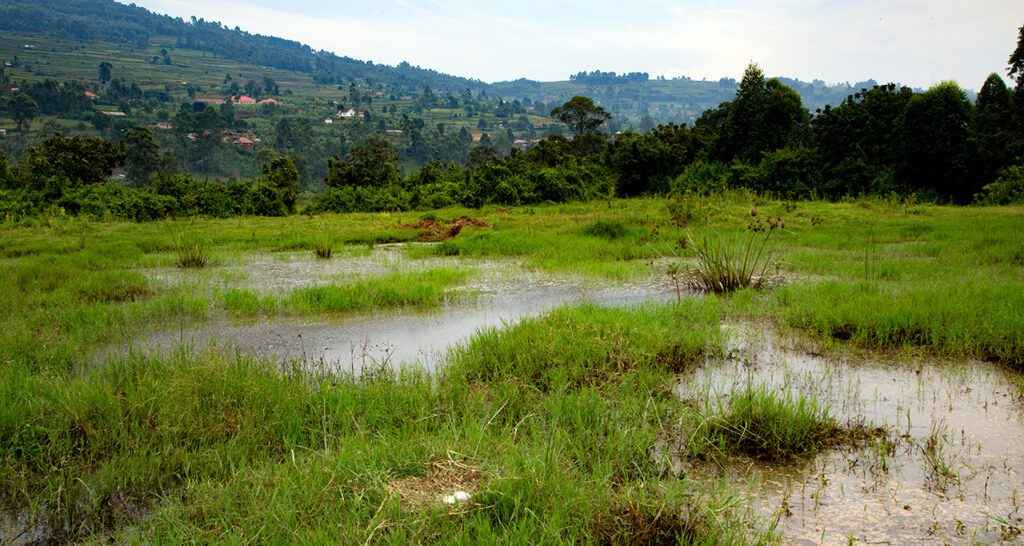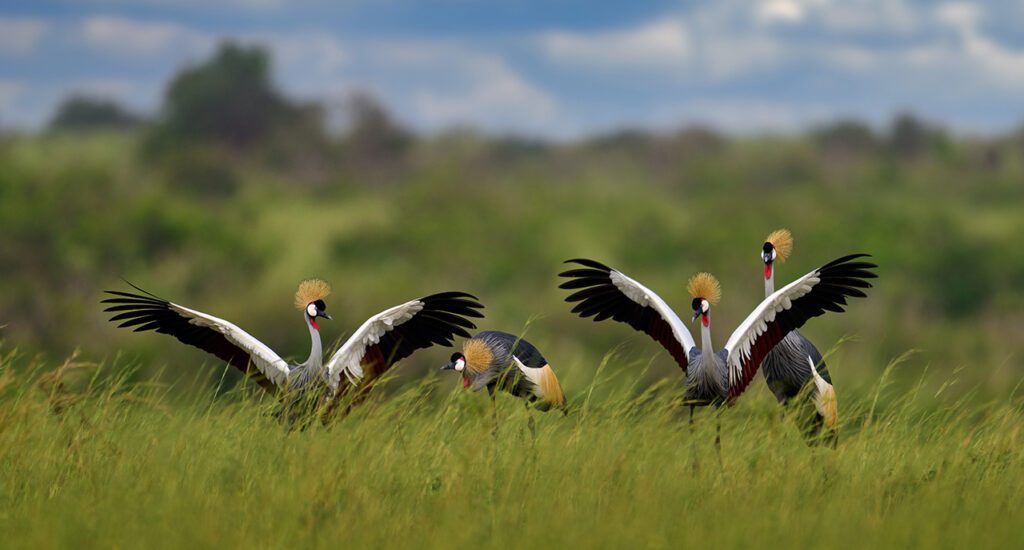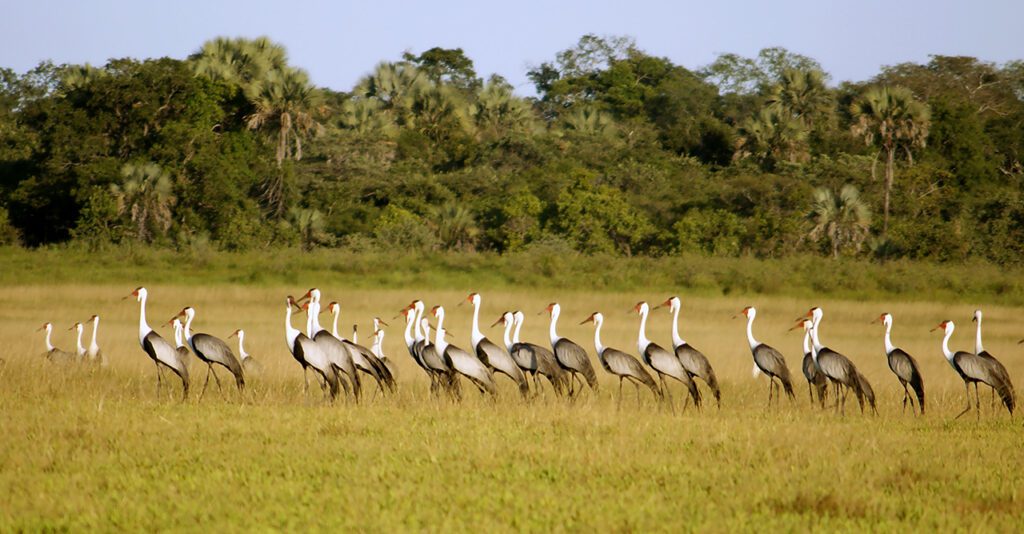Grey Crowned Crane
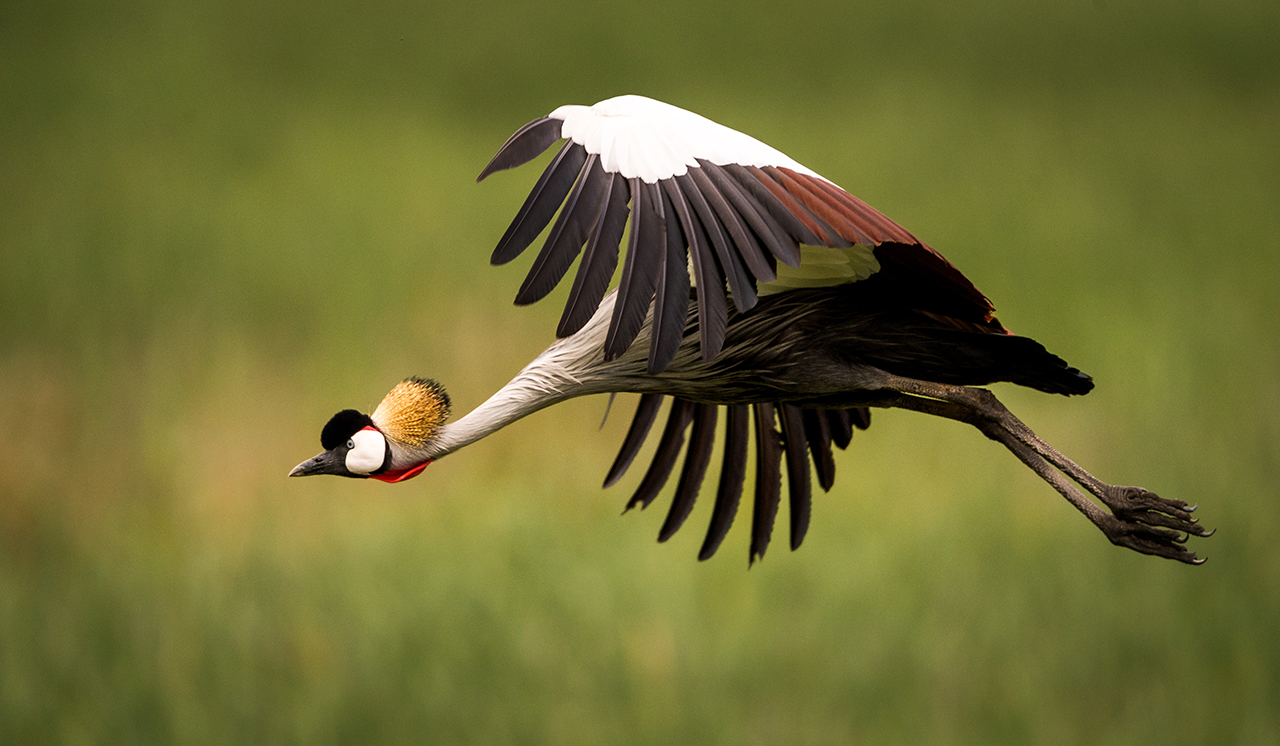
SPECIES: Balearica regulorum gibbericeps – East African Crowned Crane; Balearica regulorum regulorum – South African Crowned Crane
HEIGHT: ~ 104 cm, 3 ft
WEIGHT: ~ 3.6 kg, 8 lbs
POPULATION: 29,500 – 36,000
TREND: Decreasing
STATUS: IUCN: EN; Cites Appendix II
Photo by Daniel Dolpire
IDENTIFICATION
Adults – grey body, white wings with feathers ranging from white to brown to gold, head topped with stiff golden feathers, white cheek patches, red gular sack under the chin, black legs and feet, short, grey bill; juveniles – greyish body, brown nape, buffy face, crown spiky and golden buff.
RANGE
The Grey Crowned Crane’s range stretches from the eastern Democratic Republic of Congo, Uganda and Kenya to southeastern South Africa. Grey Crowned Cranes are non-migratory, but undertake variable local and seasonal movements and are most abundant in Uganda, Kenya and Tanzania.
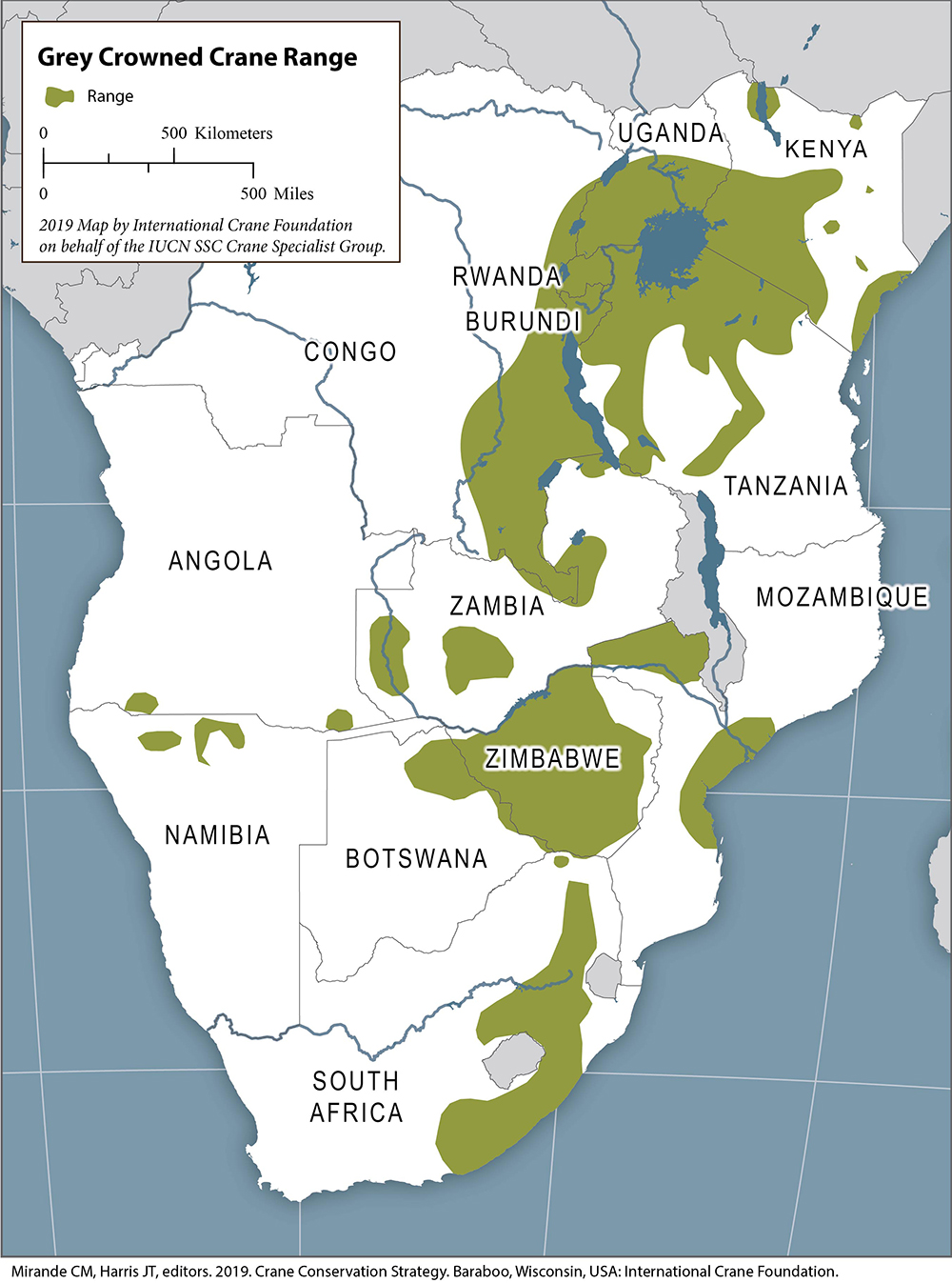
DIET
Tips of grasses, seeds, insects and other invertebrates, small vertebrates, groundnuts, soybeans, maize and millet.
CALL
Listen to Grey Crowned Crane calls:
Contact Call | A soft, purring call expressing reassurance and location.
Guard Call | A sharp, single call expressing alarm.
Unison Call | A duet performed by a pair, to strengthen their bond and protect their territory.
THREATS
Wetland loss and degradation, human disturbance, live capture and egg collection for commercial trade, unintentional or intentional poisoning, power line collisions and land development.
OUR PLAN
Reducing the impact of global trade on all African crane species. We are:
- Monitoring the supply routes of cranes, from capture to final destinations, in key hotspots for illegal trade in Africa. We are also reducing the need for wild-caught cranes by participating in and supporting global captive management and breeding programs.
- Reducing demand for wild-caught cranes by creating local, national and international awareness of the status of Africa’s resident cranes and the threat that trade poses to wild populations.
- Improving and enforcing policies that govern the trade of cranes and strengthening the consequences of engaging in illegal trade.
Engaging communities in the conservation of Grey Crowned Cranes and their wetland habitats across East and Southern Africa. We are:
- Implementing integrated, community-based projects to secure significant breeding sites for the Grey Crowned Cranes in Kenya, Rwanda, South Africa, Tanzania, Uganda, Zambia and Zimbabwe, using regional campaigns to increase pride in the cranes and identifying and training local leaders for crane and wetland conservation.
- Developing a sustainable finance mechanism to support long-term community conservation efforts for key crane sites with tools like carbon trading markets and payment for ecosystem service functions.
- Finding and advocating for ways to reduce the conflict between farmers and Grey Crowned Cranes in agricultural landscapes where substantial crop damage occurs.
Learn more about Grey Crowned Cranes:
